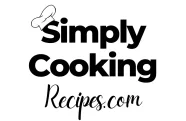Grams to Cups Conversion Made Simple for Easy Measuring
Ever tried a new recipe, only to end up staring blankly at your measuring cups?
We understand, converting grams to cups can sometimes feel like solving a crazy hard puzzle, especially with different ingredients.
You’re not alone. Lots of us bakers have messed up our recipes just because we used the wrong volume.
We get it, you want a simple way to make sense of it all.
Good news, friends we’ve got the fix for you right here!
This guide is gonna clear things up once and for all.
Grams to Cups Conversions
Grams are a way to measure how heavy something is. Think of it like weighing your ingredients on a scale.
Cups, on the other hand, measure how much space something takes up.
That’s volume, like when you fill a glass with water.
The tricky part is that the conversion between grams and cups changes a ton depending on what you’re measuring.
Flour, sugar, and milk will all have totally different conversions.
When baking, it’s important to get your conversions correct, a guide on how to read a recipe will also improve your baking skills.
How To Convert Grams To Cups
To convert grams to cups, here’s what you do:
Know the Ingredient
Different ingredients change the amount. For example, 1 cup of flour is about 125 grams, and 1 cup of sugar is about 200 grams.
Use a Chart or Calculator
Find a chart or use the online calculator below to see how many grams are in a cup for your ingredient.
Simple Math
If you want to do it yourself, use this formula:
Cups = Grams of ingredient ÷ Grams per Cup of ingredient
For example, if you have 240 grams of flour, divide 240 by 120 (since 1 cup of flour is 120 grams). So, 240 grams of flour is 2 cups.
The challenge here is that you need to know how many grams of that ingredient are in a cup. We will do out best to solve that for you.
Weigh It
For the best results, use a kitchen scale to weigh your ingredients in grams.
This way, you can easily change grams into cups depending on what you’re measuring.
 OXO Good Grips 11-Pound Stainless Steel Food Scale with Pull-Out Display
OXO Good Grips 11-Pound Stainless Steel Food Scale with Pull-Out Display
Precise and user-friendly digital food scale from OXO Good Grips. Features a unique pull-out display to prevent shadowing from large bowls or plates. Perfect for portion control, baking, and cooking.
Key Features:
- Pull-Out Display: Prevents shadowing from large containers, ensuring easy reading.
- 11-Pound Capacity: Measures in ounces, pounds, grams, and kilograms.
- Zero Function (Tare): Easily zero out the weight of containers.
- Stainless Steel Platform: Smudge and fingerprint-resistant, removable for cleaning.
- Large, Easy-to-Read Digital Display: Backlit for clear visibility.
- Unit Conversion Button: Quickly switch between measurement units.
- Portable and Compact Design:
Pros:
- Accurate and precise measurements
- Convenient pull-out display
- Easy to use and clean
- Durable stainless steel construction
- Multiple unit options
- Trusted OXO Good Grips brand
Cons:
- May be more expensive than basic food scales
- Requires 4 AAA batteries (included)
Best For: Home cooks, bakers, and anyone who needs precise measurements for cooking, baking, portion control, or dietary tracking. Ideal for those who use large bowls or plates that might obstruct a traditional scale display.


